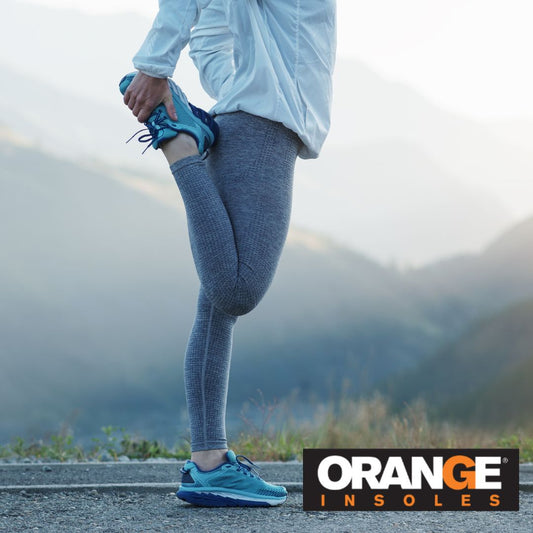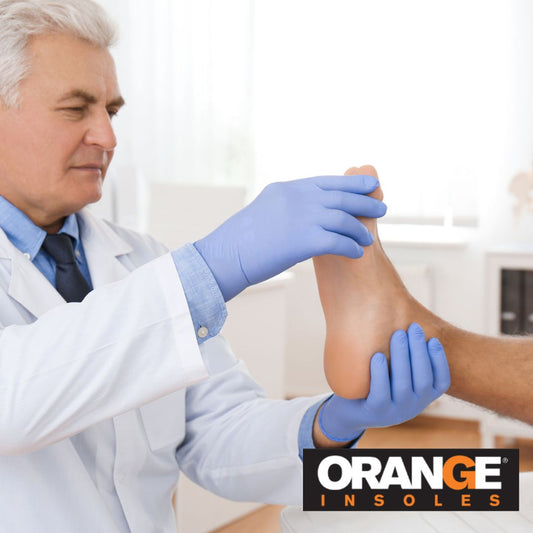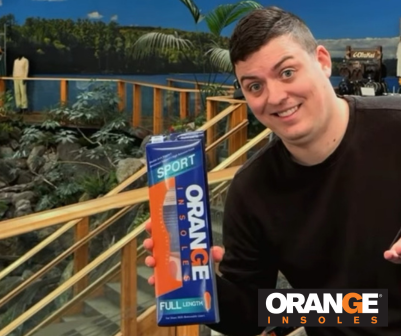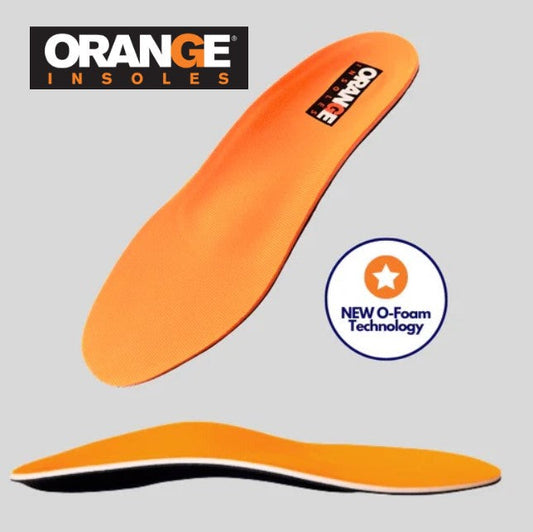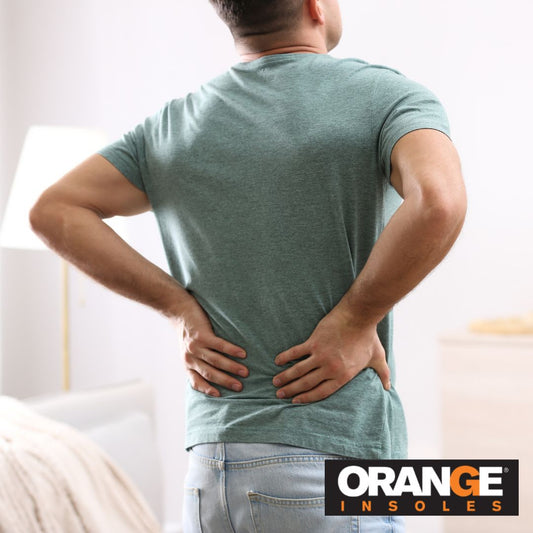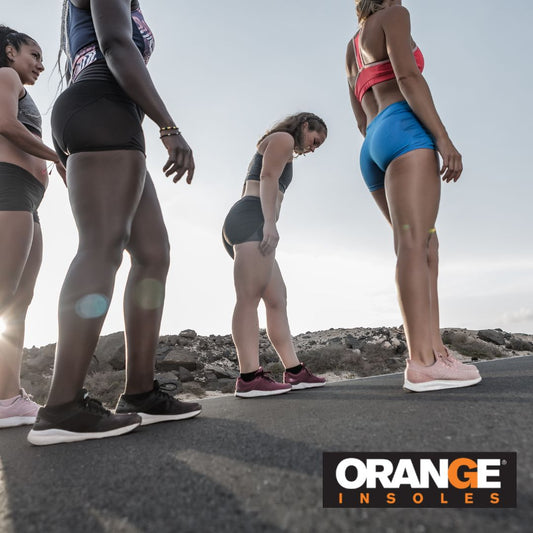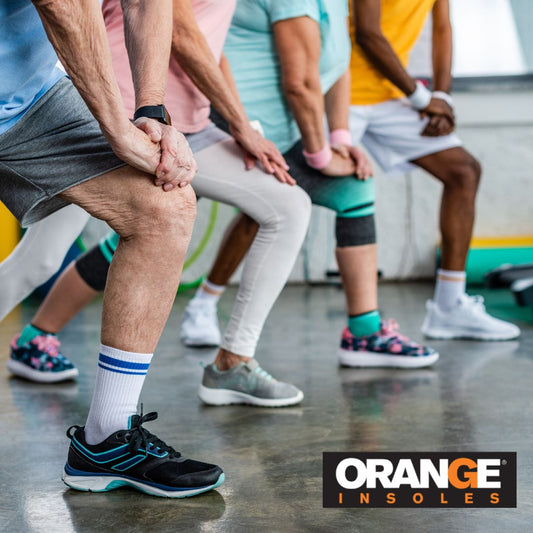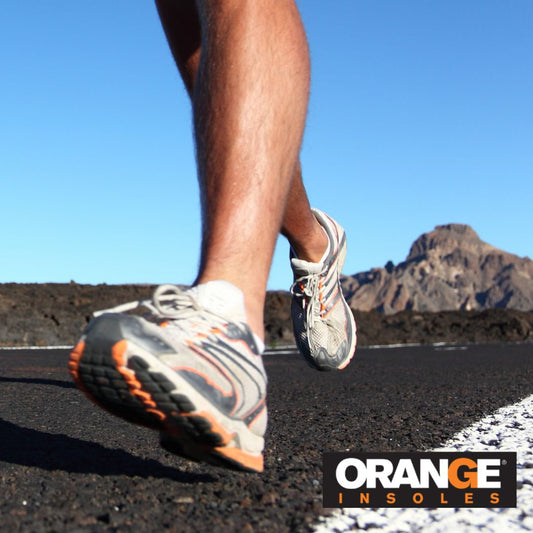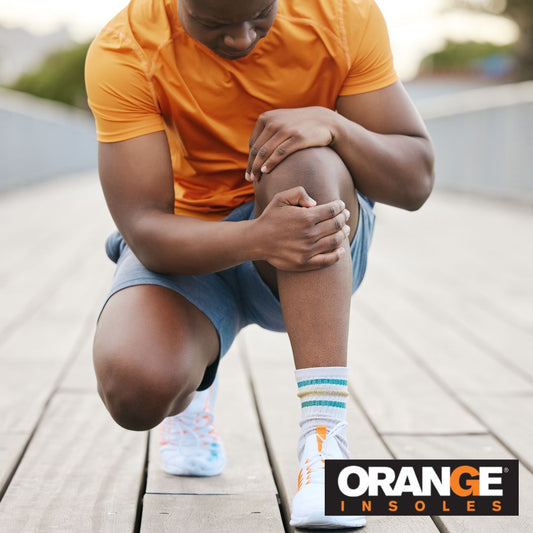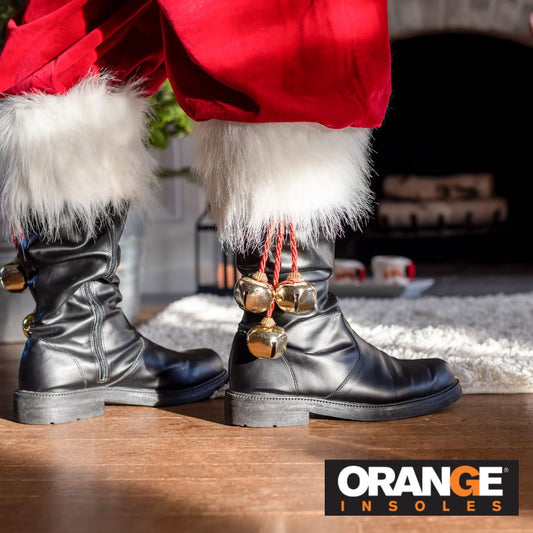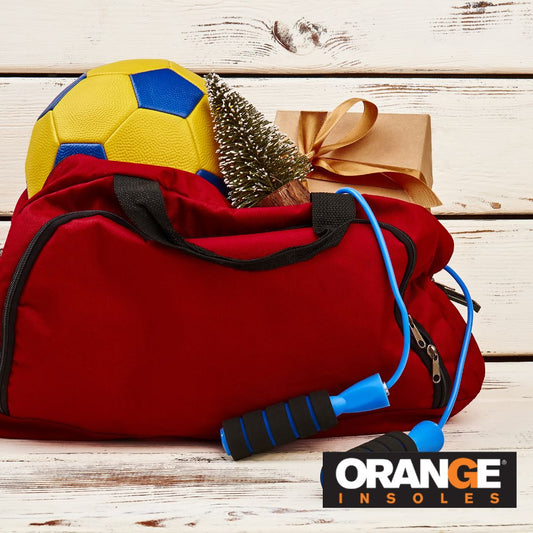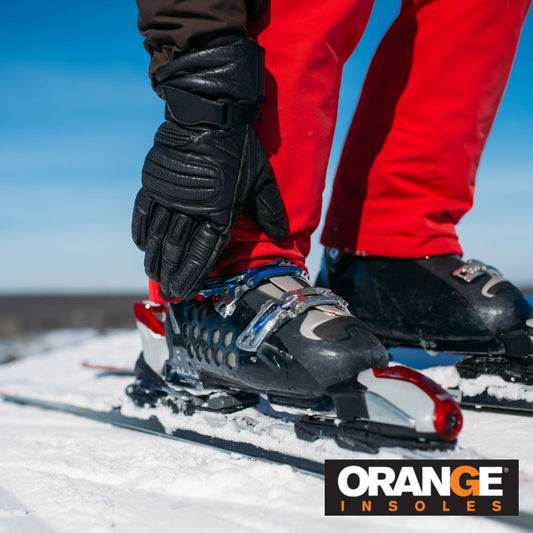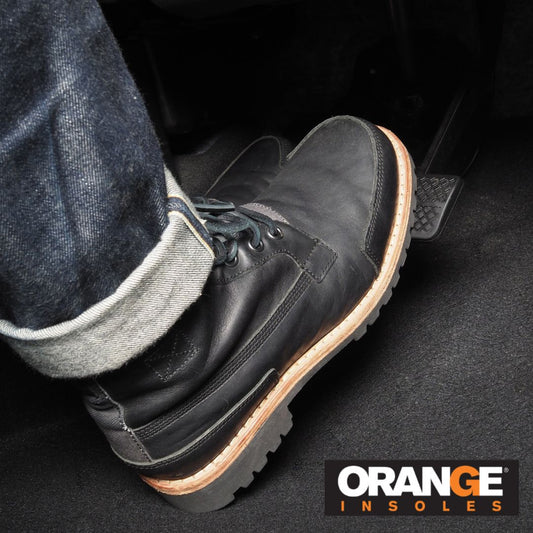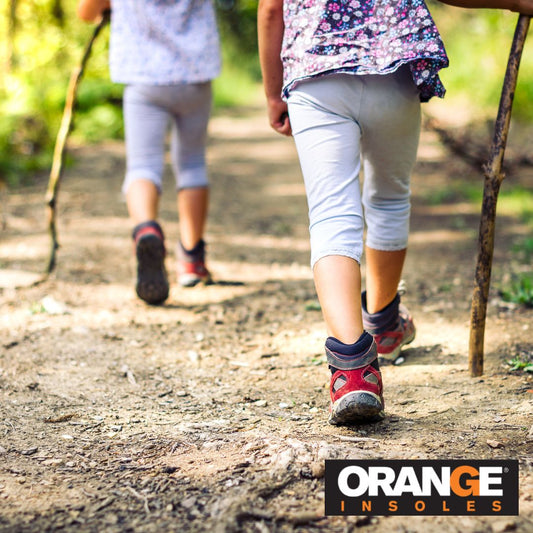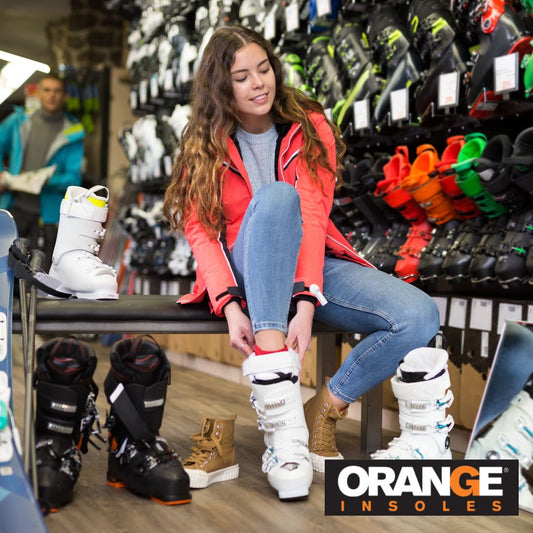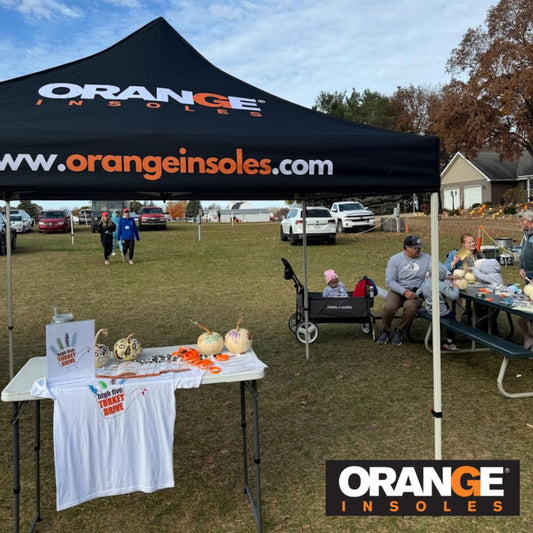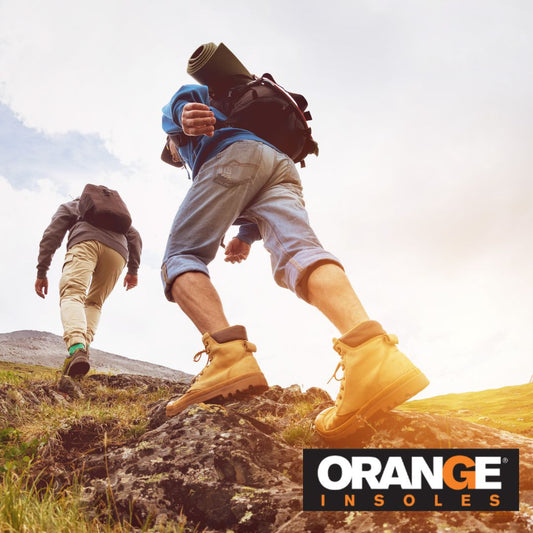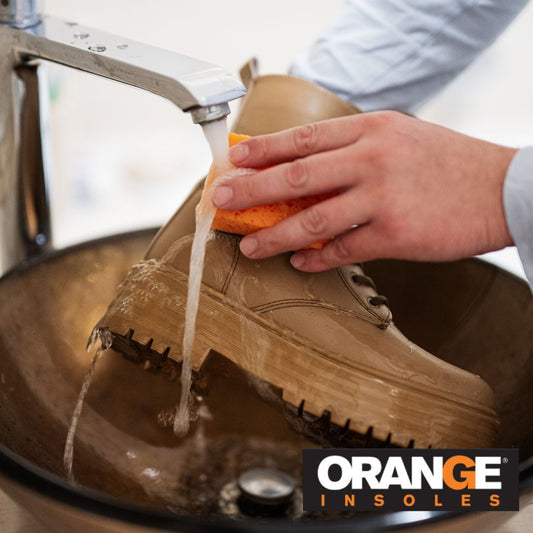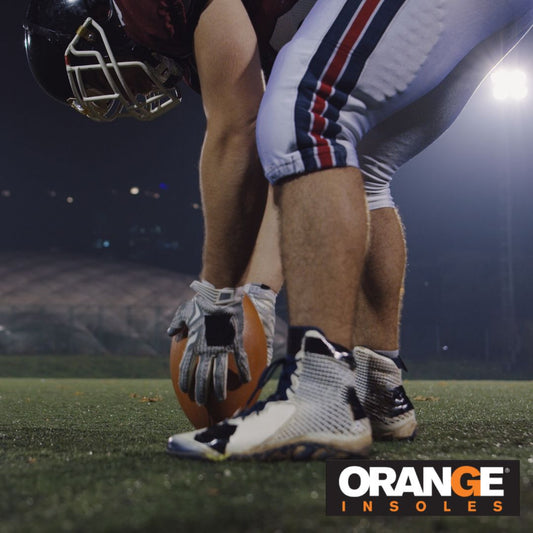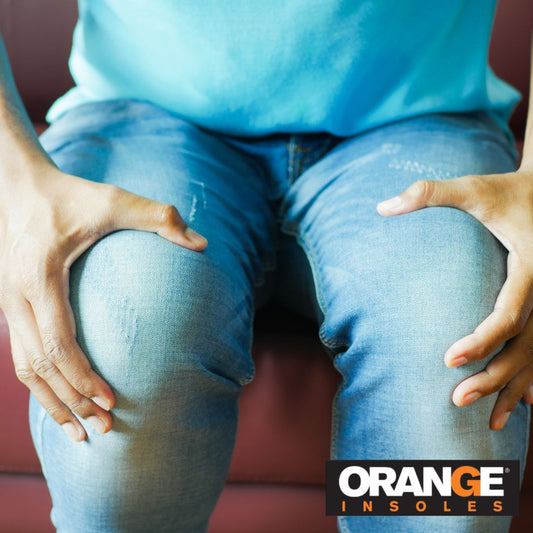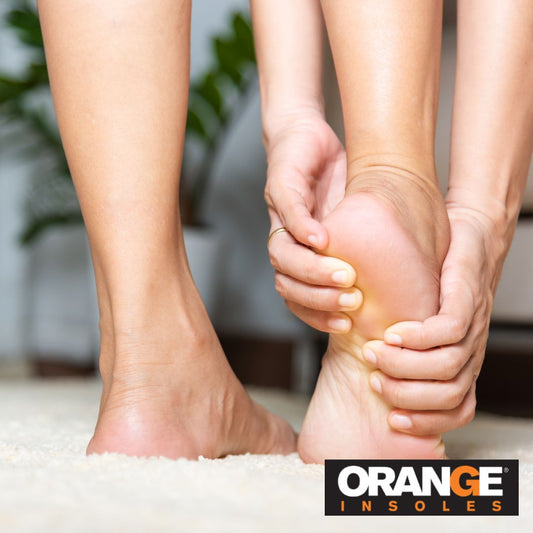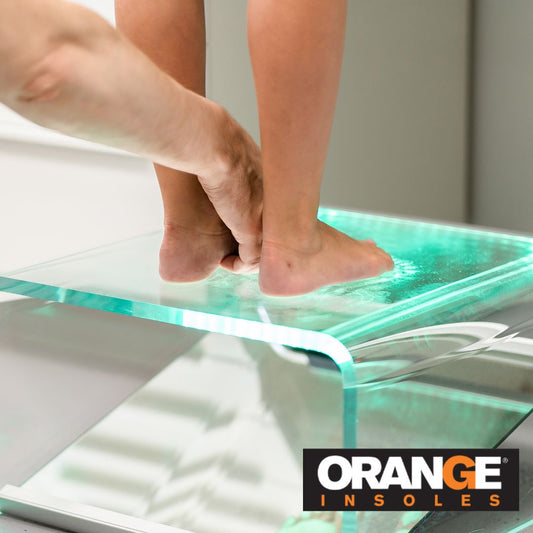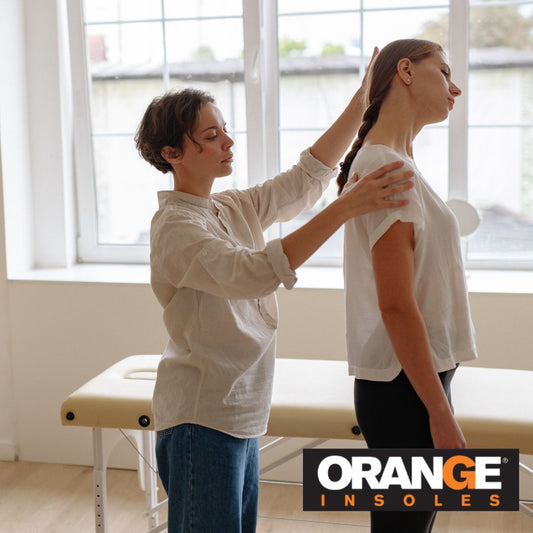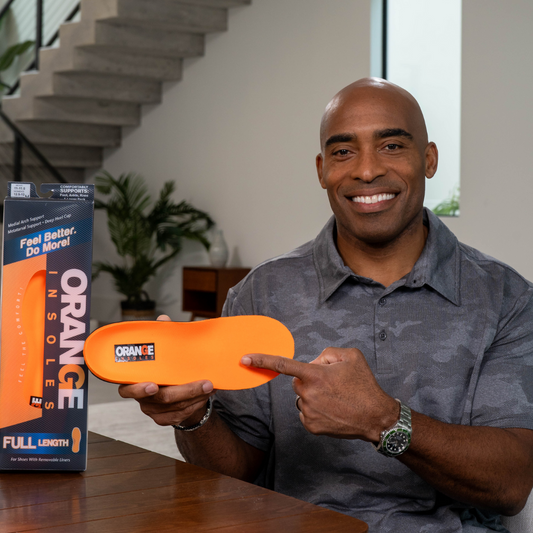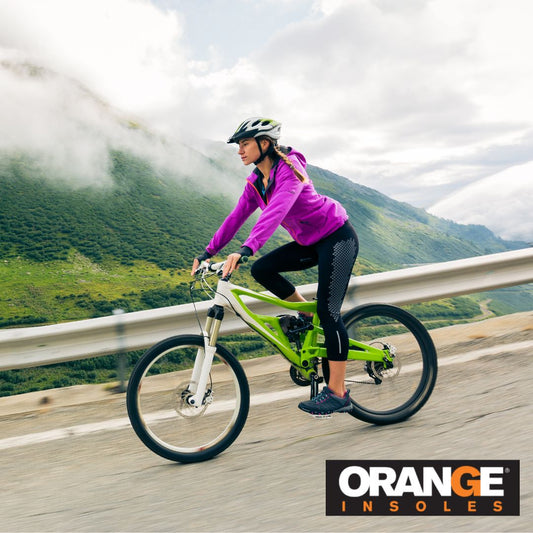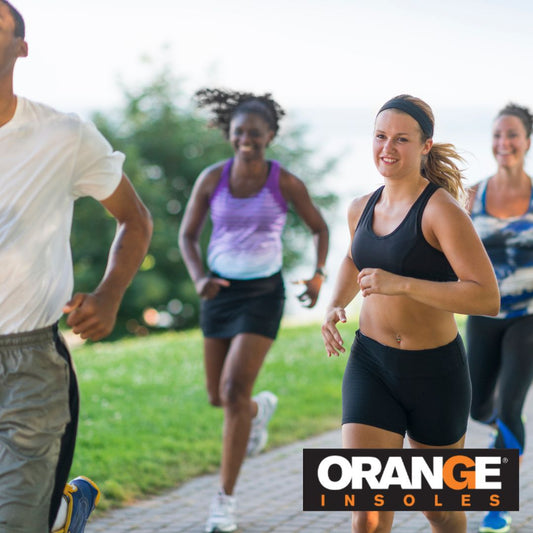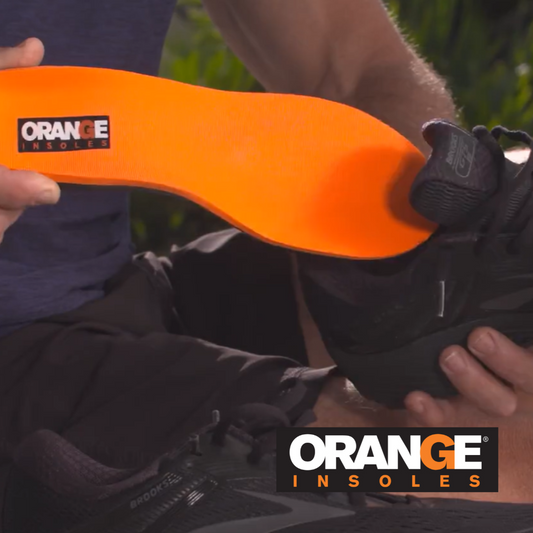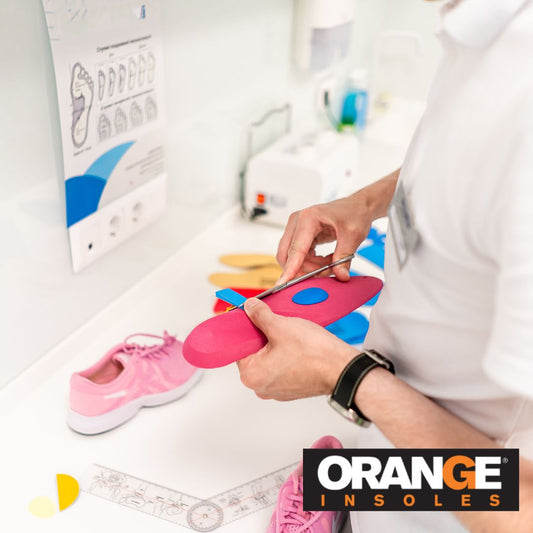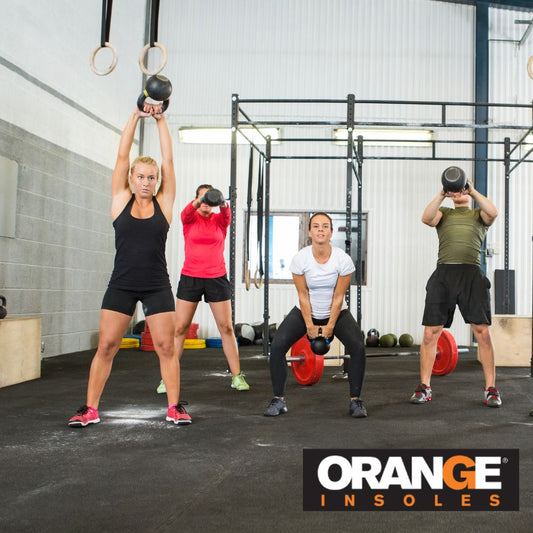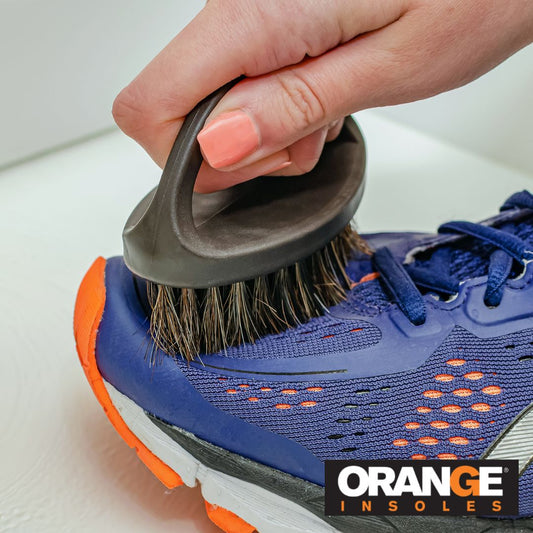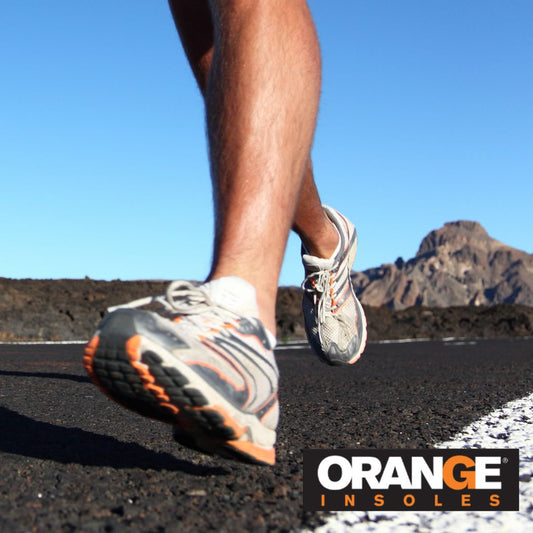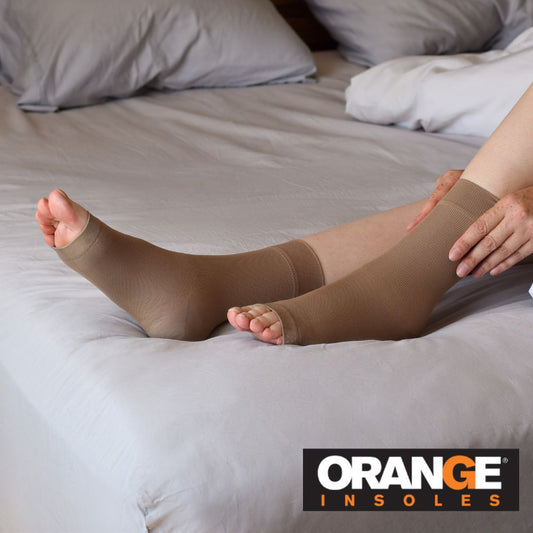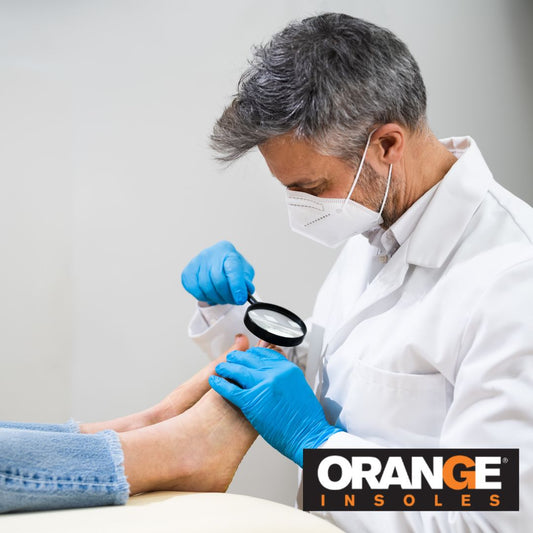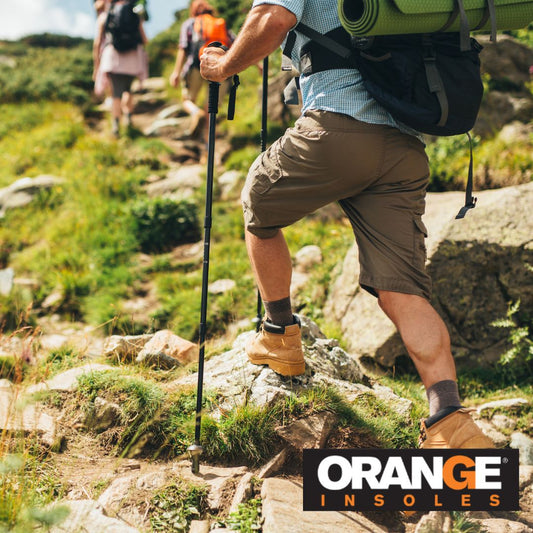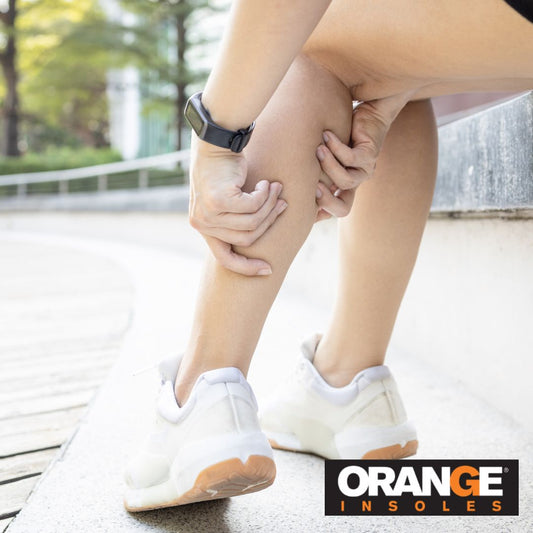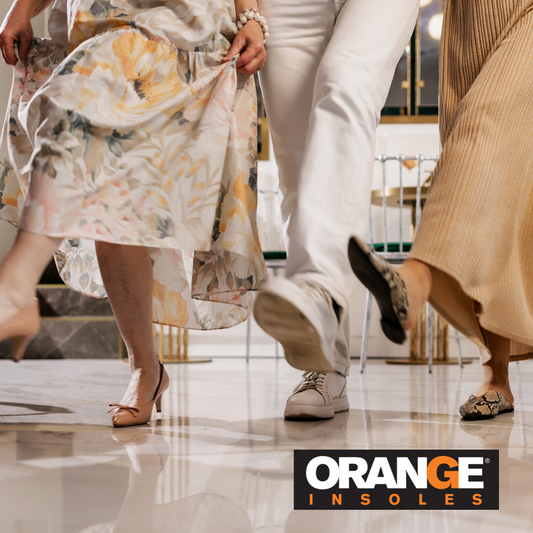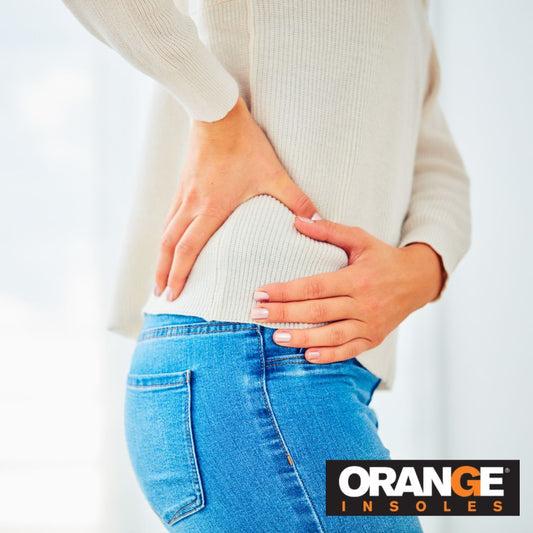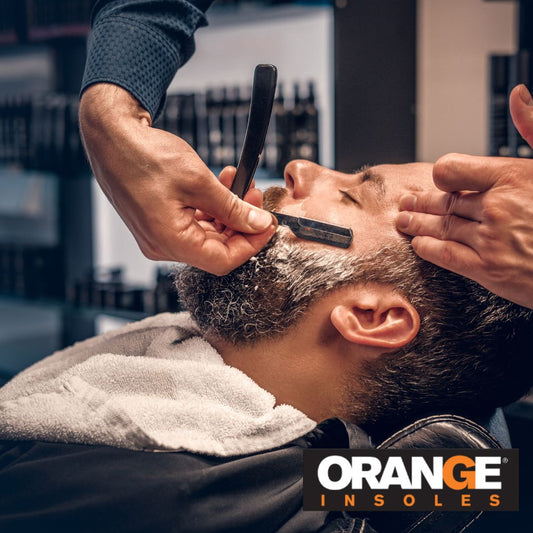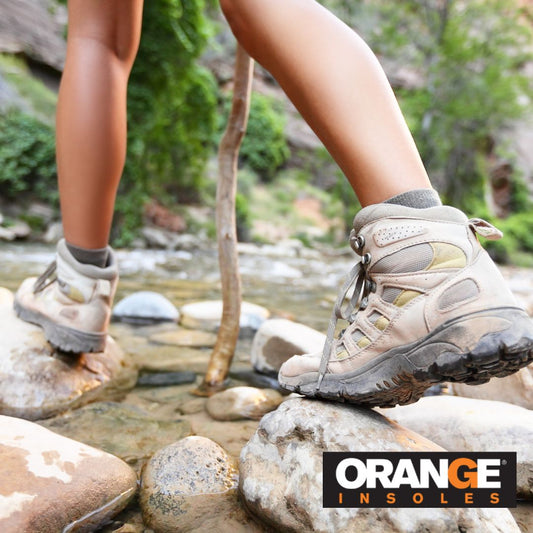Let’s start with a little disclaimer: as you can tell from our name, we sell supportive shoe insoles. So we’re obviously a fan of the support that an insole can provide, whether it’s to help correct overpronation while running or to relieve the fatigue that comes from standing on your feet all day.
But that being said, we run into a fair amount of folks who think that a shoe insole is a magic cure-all for most (if not all) lower extremity problems. Which is just not true.
While good, supportive insoles can help provide some relief for many conditions, it’s just one facet of what we like to think of as holistic foot health. There are other facets to foot health that shouldn’t be ignored just because an insole makes a positive effect.
Ideally, we don’t want anyone to become so reliant on an insole that they neglect these other aspects of foot health. So we decided to talk about 4 keys to keeping your foot health in check: support, stretching, strengthening, and form.
Key #1: Support
We talk a lot about support in our blog. Factors that impact support in footwear are alignment, (how your feet and lower extremities move throughout your gait,) and weight distribution.
Your alignment may be influenced by your foot type: whether you tend to overpronate (roll in) or suppinate (roll out) when you stride. If your feet aren’t supported, they can throw your lower body into a bad alignment that could cause fatigue or even injury based on the level of activity.
Weight distribution is often thrown out of whack when unsupportive shoes lead feet to feel fatigued. We naturally tend to shift our weight around to accommodate for uncomfortable standing positions, and it’s possible to hold our weight in ways that cause even more harm.
This is why supporting your feet is such a crucial part of foot health. And, yes, a supportive insole can be a wonderful tool in this regard. But picking the right pair of shoes can be just as important.
In our post on the Anatomy Of A Shoe, we talk about the factors that impact support. (And no, price isn’t one of them.) Make sure that when you’re choosing footwear with support in mind that you pick shoes with a nice wide base for better balance and weight distribution. Also, look to the midsole for high contours to ensure that your medial arches have plenty of support.
Key #2: Stretching
Support is critical. But supportive footwear and shoe insoles just hold your feet in the right place. Which is why stretching is another key to holistic foot health.
Stretching can help alleviate issues by loosening tight muscles. The key is to keep your muscles from getting so tight that they pull you out of proper alignment. If your leg muscles are pulling you into an unnatural gait, it can cause torque or other forces to cause pain and injury to sensitive areas like the hips and knees.
Shin splints can also be a common culprit when there’s a lack of healthy stretching. If the calf muscle is tight, it can lead to pain in the shins. And, even worse, it can pull on the achilles tendon and lead to all sorts of pain.
So make sure to limber up before activities like running… and even before a long day of working on your feet. The looser your muscles, the better chance you have of staying in the right alignment throughout the day.
Key #3: Strengthening
While we’re on the topic of muscles, let’s talk about why you shouldn’t skip foot and glute exercises when leg day rolls around.
When your muscles are strong, it takes more to cause fatigue. The less fatigue you suffer, the better your chances of keeping healthy weight distribution and alignment throughout your day.
Much like stretching, they key here is to make sure that your muscles aren’t pulling you out of alignment. If one part of your body is stronger than another, that weaker spot could be vulnerable to stresses that cause pain or fatigue.
A good example of this is “dumb butt syndrome,” a condition where the leg muscles are developed while the external rotators and abductors of the hip remain weak. The hip can’t stabilize and it causes pain and alignment issues. Single-leg squats are an excellent way to strengthen those hip muscles and fix the problem.
Strengthening the foot itself is also an important way to help protect against alignment problems. Try balancing on one foot, or grabbing marbles with your toes and moving them from one spot to another. (These exercises can help with issues like overpronation.)
Like with any exercise, there’s a fine line between strengthening muscles and breaking them down- so be sure to be vigilant. If you’re in pain, chances are you’re doing something wrong and could be causing harm. So strengthen smart!
Key #4: Form
We’ve talked about proper form before. There’s an ideal form for walking and an ideal form for running. But even if you aren’t exercising or training, it’s important to understand the basics of good form if you want to avoid injury or fatigue when you’re on your feet.
The key is to develop a form that is efficient, making the best use of your movement while causing the least amount of impact to your body.
There are a few key elements to having good form:
Posture
Keep yourself set straight, so that you are nice and tall.
Make sure that you aren’t slumped over. You don’t want to be bent at the neck, shoulders, or waist. Keeping yourself slumped inaccurately distributes weight in your body and puts yourself at further risk of injury of fatigue.
Here’s a tip: to reset your posture when getting ready for a run or walk, pull your hands above your head. It will straighten your body. Hold that pose, drop your hands, and you have your optimal posture!
Stride
The key here is not to over-stride.
If you over-extend your stride, your knee locks up mid-stride. This has the effect of slamming your heel down to the ground, instead of allowing for a more natural impact.
That jerky lock-slam effect acts as a braking mechanism. It slows you down. It jarrs the body, which increases your chance of injury.
Make sure that you are walking with strides that are the appropriate length for your height, and that you are able to land softly on your heel. The correct amount of knee bend is critical in terms of providing enough shock absorption to avoid injury.
Momentum
As you move forward to walk, lean forward slightly. The idea is that, by leaning the correct way, gravity will help keep you moving forward. Your weight will be shifted where it should be, and you won’t need to overcorrect your gait.
Make sure that you don’t bend at the waist. You’ll want to use your ankles to keep your alignment completely straight while taking advantage of gravity to keep you moving.
No Quick Fix
When it comes to holistic foot health, there’s no one quick fix solution. Make sure that you are consistently stretching, strengthening, and working on your form in order to feel the best you can while you’re on your feet.
Of course, it’s hard to build those elements correctly without proper support, which is where a shoe insole might really make a difference.
At Orange Insoles, our goal is to provide the support and comfort that you need to keep pursuing optimal foot health. We’re part of a balanced plan, not a magic bullet.
Orange Insoles makes an insole that can really enhance the support of almost any shoe, (from running shoes to work boots to casual flats,) with medial arch support, a heel cup, and a metatarsal pad that helps with issues of alignment and weight distribution. Find an insole in your size today!








